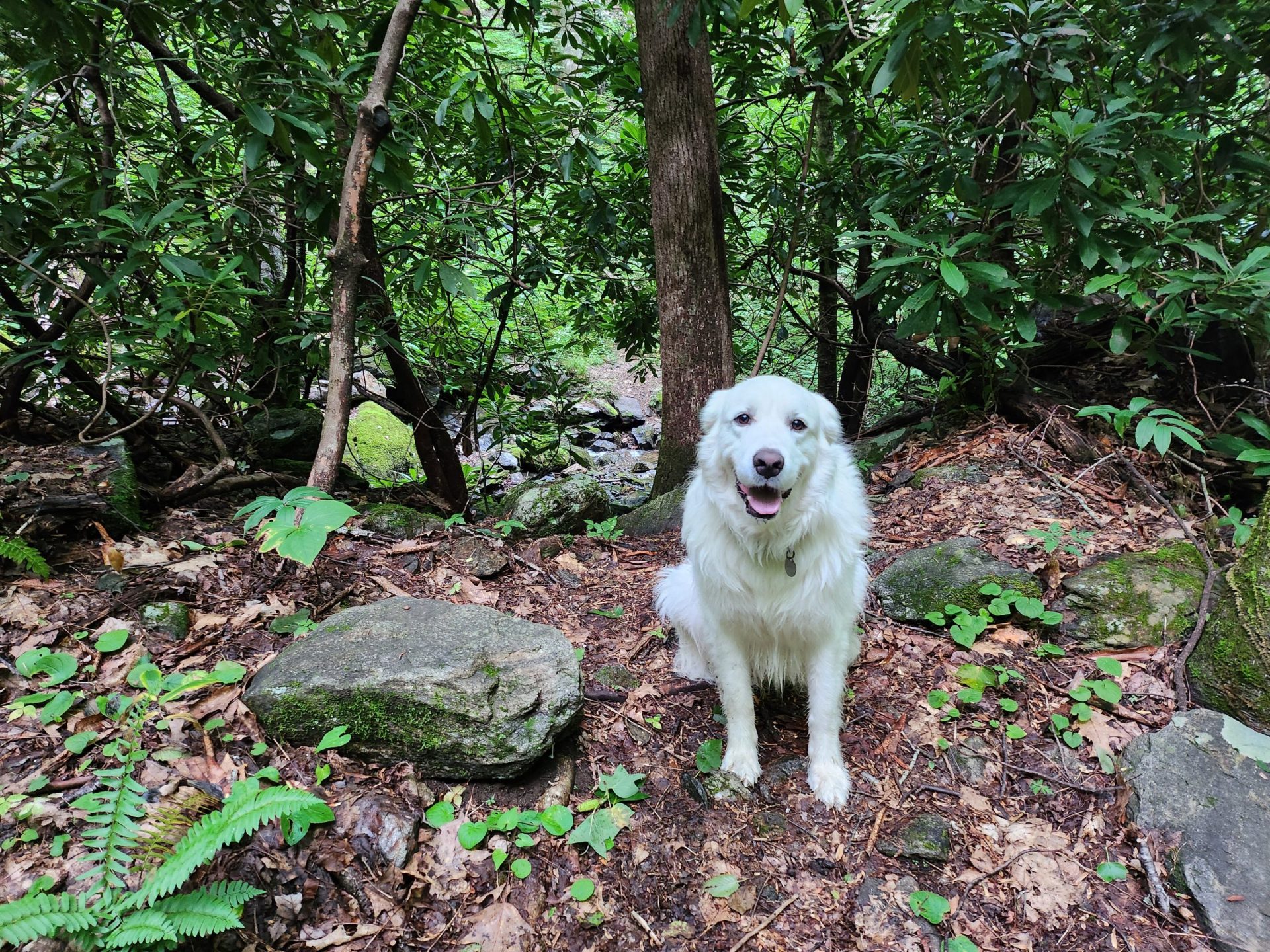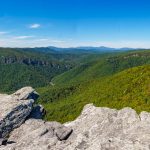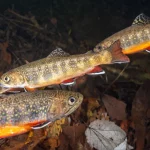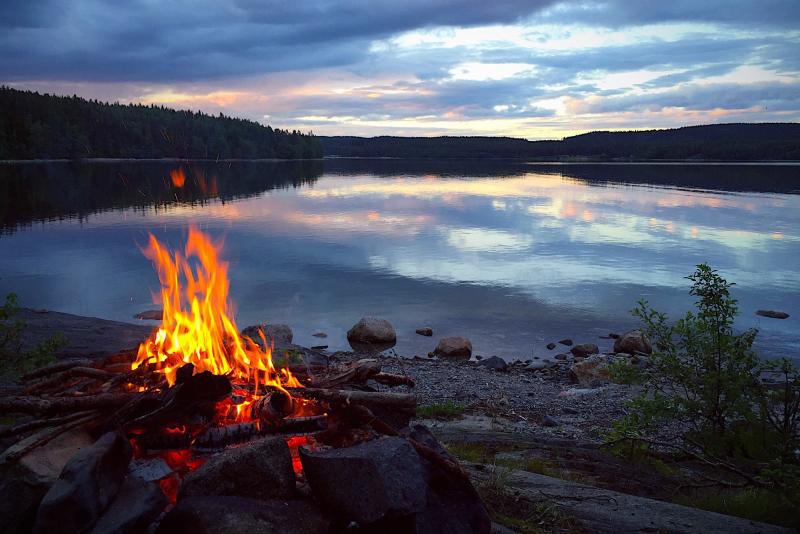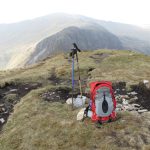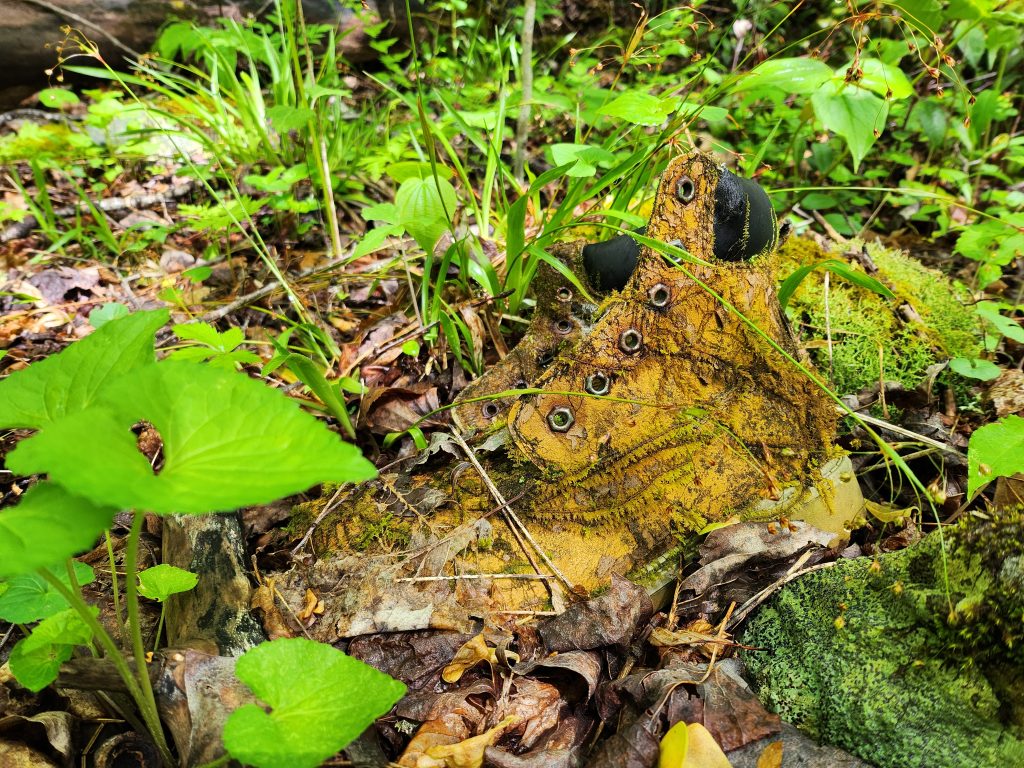
Hey nature lovers! We’re about to embark on a journey together, one that’s all about respect, care, and love for the world around us. It’s a journey that begins and ends with a simple principle, “Leave No Trace.” You might have heard about it, or maybe this is your first time. Either way, get ready, because we’re about to dive deep into what this means and why it matters.
Imagine you’re taking a walk in your favorite forest or park. You feel the crunch of leaves beneath your feet, breathe in the fresh air, and listen to the symphony of birds. Now, what if that serenity was disturbed by litter scattered about, or the unmistakable signs of human damage? Not such a pretty picture, is it? That’s where Leave No Trace comes in. It’s a set of guidelines designed to help us enjoy nature responsibly, preserving its beauty for us and future generations.
In a world grappling with climate change and other environmental challenges, this principle takes on even greater importance. It’s not just about keeping our favorite spots clean, but about preserving ecosystems, protecting wildlife, and respecting the experience of other adventurers.
So, ready to learn more? Come along, then! Let’s explore this principle together, and see how we can make a positive impact on our beautiful planet.
Historical Context of Leave No Trace
You know, “Leave No Trace” isn’t just a new idea – it’s got a history as rich and textured as the rings inside an ancient redwood. So, let’s take a little trip down memory lane to understand how we arrived at this principle.
Let’s hop in our time machine and set the dial to the 1960s and ’70s. Remember those days? Me neither, but I’ve heard stories! It was a time of exploration and freedom. Our national parks were buzzing with visitors eager to experience the great outdoors. However, this influx led to a noticeable impact on the environment – trampled plants, eroded trails, and overflowing trash cans. The message was clear: we needed a better way to interact with nature.
Enter “Leave No Trace.” Initially, it was a slogan used by the U.S. Forest Service, aimed at reducing the human footprint in forests. Over time, it grew into a set of guidelines embraced by outdoor organizations and nature enthusiasts around the globe.
Now, don’t get me wrong, the principle has evolved since its early days. But the heart of it remains the same: love and respect for our environment. It’s about preserving the beauty of our natural spaces, not just for us, but for everyone who comes after us.
Detailed Discussion of the Seven Principles
Now that we’ve gone through the history of Leave No Trace, it’s time to delve into the heart of the matter – the seven principles themselves. Now, don’t be intimidated! These principles are like your best pals on a camping trip, guiding you on how to enjoy nature responsibly.
Let’s start with the first one, Plan Ahead and Prepare. It’s like packing for a journey – you wouldn’t head out without a map or some snacks, would you? This principle is about doing your homework before you set out. Check the weather, know the rules of the area you’re visiting, and pack in (and out) everything you need. One time, I forgot my raincoat, thinking the skies were clear. Boy, was I in for a surprise when a sudden shower hit!
Next up is Travel and Camp on Durable Surfaces. Think about walking on a well-trodden path versus stomping all over delicate wildflowers. The goal here is to minimize our impact on the environment. Stick to trails and camp in designated areas. It’s like going to a friend’s house and keeping your feet off their coffee table – simple respect, right?
On to the third principle, Dispose of Waste Properly. If you bring it in, you take it out. Whether it’s coffee filters or plastic wrappers, it’s our responsibility to clean up after ourselves. Remember, nobody likes a messy guest!
Our fourth principle is Leave What You Find. This one’s a bit like visiting a museum. You wouldn’t pocket a painting because you think it’s pretty, would you? So why pick flowers or move rocks in nature? Leaving things as you found them helps preserve the natural environment for others to enjoy.
Fifth is Minimize Campfire Impact. We all love a good campfire, don’t we? But they can be harmful if not managed properly. Stick to established fire rings, keep fires small, and burn only sticks from the ground. Trust me, the s’mores taste just as good!
The sixth principle, Respect Wildlife, is about observing from a distance. Remember, we’re visitors in their home. No feeding, no getting too close, and definitely no selfies with bears!
Last but not least, Be Considerate of Other Visitors. Share the trails, keep noise levels down, and respect others’ experiences. It’s the golden rule of outdoor adventures: treat others as you’d like to be treated!
And there are the seven principles of Leave No Trace, each one important and interlinked. In the next section, we’ll look at how these principles come to life in different settings.
Leave No Trace and Sustainable Tourism
Now that we’ve covered the seven principles of Leave No Trace, it’s time to see them in action. And what better way than in the context of sustainable tourism? After all, we all love to travel and explore new places, don’t we? But it’s crucial we do so without leaving our mark in a harmful way.
You see, sustainable tourism is all about finding a balance. It’s like walking a slackline – on one side, we have our desire to explore and enjoy new places, and on the other, the need to preserve these locations for future generations. And that’s where the Leave No Trace principles come in handy.
Let’s take a look at some real-world examples, shall we?
Ever been to Yellowstone National Park? It’s a prime example of a place where Leave No Trace is super important. With its geysers, hot springs, and extraordinary wildlife, it’s a paradise for nature lovers. But with millions of visitors each year, the potential for damage is high. That’s why the park has strict guidelines in place, aligned with the Leave No Trace principles. They’ve got designated trails to protect the flora, bear-proof trash cans to keep wildlife safe, and guidelines for campfires to prevent forest fires.
Then there’s Costa Rica, a country that’s made sustainable tourism its calling card. From its rainforests to its beaches, the focus is on preserving the natural beauty while still welcoming tourists. And guess what? Leave No Trace is a big part of that! Tourists are educated about the local ecosystems and encouraged to follow the seven principles, keeping their impact to a minimum.
These are just two examples, but the list goes on. The bottom line is, wherever we go, Leave No Trace can help us be more responsible travelers. It’s like a passport to a more sustainable future!
Next I’ll go into the challenges we face in implementing Leave No Trace. But don’t worry, it’s not all doom and gloom! There are also solutions and ways we can all contribute.
Real-world Application of Leave No Trace
I’ve been going on about the principles of Leave No Trace, but now it’s time to see them in action. After all, the real beauty of these principles is how they can be applied anywhere, from the heart of a bustling city park to the serene wilderness, and even in our own backyards!
Let’s start with wilderness settings. Picture yourself on a backcountry trail, surrounded by towering trees and the soft chirping of birds. It’s important to stick to the trail, camp at least 200 feet from lakes and streams, and of course, pack out all your trash. Once, I was on a multi-day hiking trip and came across a campsite littered with trash. It was heartbreaking, and a stark reminder of why these principles matter.
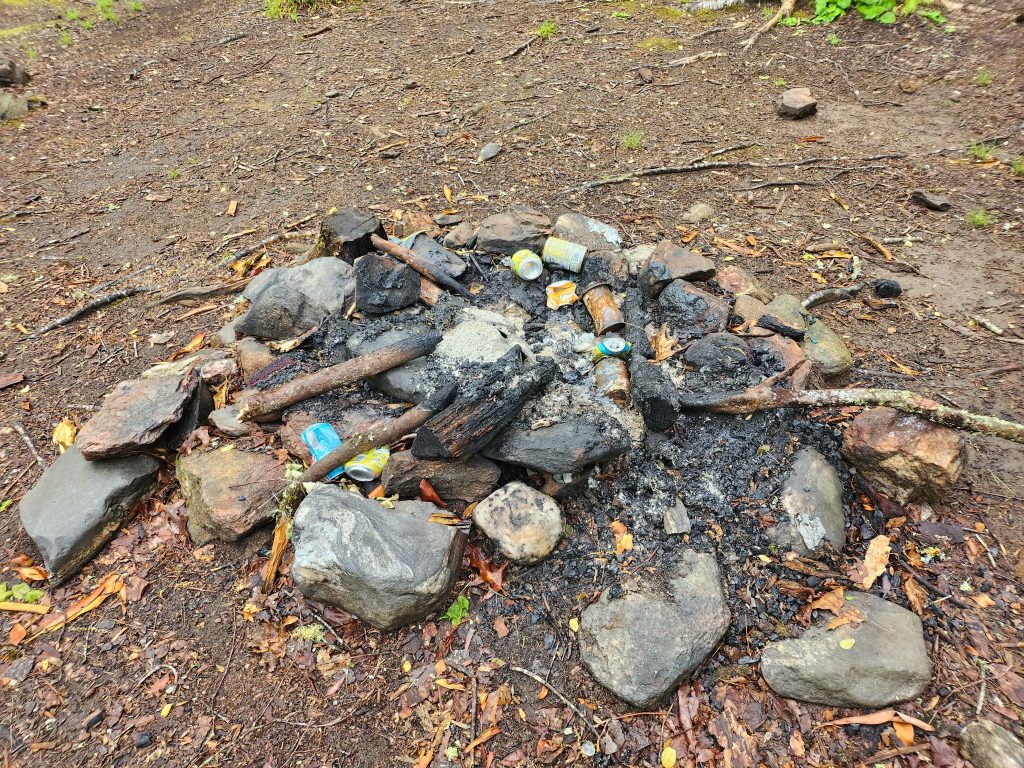
Now, imagine you’re in an urban park. Even in the heart of the city, Leave No Trace principles still apply. Keep to established paths, respect plant and animal life, and dispose of your litter properly. It might seem small, but remember, every action counts!
But let’s not forget about applying these principles at home. Sure, we’re not dealing with untouched wilderness, but that doesn’t mean we can’t respect our environment. Composting organic waste, recycling, and reducing water usage are all part of Leave No Trace. It’s all about reducing our impact on the planet, no matter where we are.
And that’s the beauty of Leave No Trace. It’s not just for hardcore hikers or dedicated naturalists. It’s for all of us. Because every one of us has a role to play in protecting our planet, and it starts with the small decisions we make every day.
Challenges to the Implementation of Leave No Trace
You’ve stuck around this long, so it’s clear you’re committed to understanding the Leave No Trace principles. But let’s be real – as simple as these principles sound, implementing them isn’t always a walk in the park. In fact, there are some pretty significant challenges that can get in the way. But hey, no mountain is too high to climb, right?
First up, there’s the issue of common misunderstandings. Like the time my buddy thought “Leave No Trace” meant he could leave his apple cores behind because they’d decompose. Sounds logical, right? But it’s not quite that simple. Food waste can disrupt wildlife behaviors and ecosystems. It’s important that we all understand the principles fully and correctly.
Then there’s the challenge of societal barriers. For some, accessing reusable or biodegradable goods can be tough due to cost or availability. For others, existing habits and social norms can make it hard to adopt Leave No Trace behaviors. I remember struggling to convince my old-school uncle not to feed the ducks at the park. It’s not always easy to change behaviors, but with patience and education, we can make progress.
Finally, let’s not forget the environmental impacts when these principles aren’t followed. We’ve all seen it – trampled vegetation, litter-strewn trails, wildlife disrupted. Each time we fail to adhere to the principles, we risk causing harm to our natural world.
Sounds pretty daunting, right? But don’t lose heart! Remember, every great journey begins with a single step. By understanding these challenges, we’re better equipped to overcome them.
Role of Education in Promoting Leave No Trace
We’ve covered a lot of ground so far – from the history of Leave No Trace to the challenges we face in implementing it. But there’s one crucial piece of the puzzle we haven’t dived into yet: education. Without it, our efforts to spread the Leave No Trace principles would be like shouting into the wind!
First, let’s talk about why public awareness and education are so essential. Picture this – you’re on a hike, and you spot a fellow hiker tossing an apple core into the bushes. They probably think they’re doing no harm, right? But we know better. We know that food waste can disrupt wildlife and ecosystems. That’s where education comes in. By spreading awareness, we can correct misunderstandings and promote responsible behaviors.
Now, let’s talk about some current educational initiatives. Organizations like the Leave No Trace Center for Outdoor Ethics offer resources for educators, online awareness courses, and even training programs for those who want to become Leave No Trace trainers. And it’s not just formal initiatives – even sharing posts on social media or chatting with friends on a hike can make a difference!
But what about the future? There are plenty of opportunities for new educational initiatives. Imagine if Leave No Trace principles were included in school curriculums or if there were interactive exhibits at national parks. The possibilities are endless!
Remember, education is our most powerful tool in promoting Leave No Trace. It’s how we turn principles into action and ensure a brighter future for our planet.
Coming up, we’ll be looking at the future of Leave No Trace and how it adapts to emerging environmental concerns. So, grab your adventure hat, and let’s keep exploring!
The Future of Leave No Trace
Hello, trailblazers! As we near the end of our journey, it’s time to gaze into the crystal ball and ponder the future of Leave No Trace. How will it evolve to meet new environmental challenges? How can we ensure its principles continue to guide us as we navigate our relationship with the natural world?
First up, let’s talk about emerging environmental concerns. Things like climate change, species extinction, and plastic pollution weren’t at the forefront when Leave No Trace was first conceived. But now, they’re realities we can’t ignore. So, how does Leave No Trace fit into this picture? Well, its principles are flexible and adaptable, encouraging behaviors that minimize our impact on the environment. Whether it’s reducing waste or protecting wildlife, Leave No Trace has a role to play.
Then there’s the challenge of increasing urbanization and population growth. As more people flock to cities, green spaces become even more critical – and vulnerable. But guess what? Leave No Trace isn’t just for the wilderness. It applies just as much to our city parks and local green spaces. And as these spaces become more crowded, it’s even more important that we all do our part to protect them.
Finally, let’s think about the digital age. How can we use technology to promote Leave No Trace? From social media campaigns to virtual reality experiences, the possibilities are endless. Imagine a VR game that teaches kids about Leave No Trace, or a mobile app that helps hikers plan low-impact trips. Technology has the potential to take Leave No Trace education to the next level!
While the future might bring new challenges, it also brings new opportunities. As long as we stay committed to the principles of Leave No Trace, I’m confident we can navigate whatever comes our way.
So, as we wrap up this journey, remember – Leave No Trace isn’t just a set of guidelines. It’s a way of life, a commitment to respecting and protecting our beautiful planet. So, let’s get out there and make a difference, one step at a time!
In our final section, we’ll be reflecting on what we’ve learned and how we can apply it in our everyday lives. So, stay tuned for one last adventure together!
Reflection and Personal Application
Well, we’ve made it, my friends! We’ve hiked the trails of history, delved into the details of the Leave No Trace principles, and even gazed into the future. But what does all this mean for us? How can we apply these principles in our daily lives? That’s what we’ll be reflecting on in this final section.
Leave No Trace is more than just rules for camping or hiking. It’s a philosophy, a way of life that encourages us to be mindful of our impact on the environment, wherever we are. Whether we’re in the heart of a city or deep in the wilderness, we can apply these principles to reduce our footprint.
Here’s how we can do it:
- At home: Turn off the lights when you leave a room, recycle and compost waste, use less water, and consider using renewable energy sources. Remember, even small actions can have a big impact!
- In our communities: Respect local green spaces, pick up litter, and encourage others to do the same. Why not organize a community clean-up or plant some trees in your local park?
- While traveling: Stay on designated trails, dispose of waste properly, respect wildlife, and be considerate of other visitors. Always remember, we’re guests in these places.
But most importantly, we can spread the word! Share your knowledge of Leave No Trace with friends, family, and anyone else who’ll listen. Post about it on social media or chat about it around the campfire!
The journey to protect our planet is a long one, and it’s not always easy. But with the Leave No Trace principles as our guide, I’m confident we can make a difference. So, let’s get out there, respect our beautiful planet, and leave no trace, one step at a time.
So long, fellow adventurers, until our next journey together!
